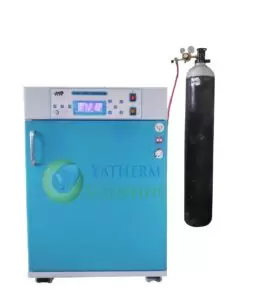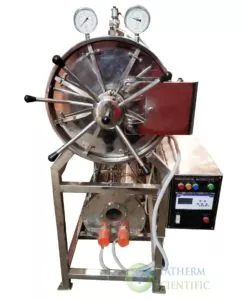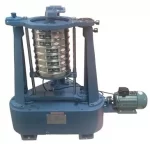CO2 Incubator: A Breath of Fresh Air
CO2 incubator – a remarkable piece of equipment plays an important role in maintaining the perfect conditions for cells to grow and multiply.
What is a CO2 Incubator?
CO2 incubator creates an environment that mimics the conditions inside the human body, providing a warm, humid, and precisely controlled atmosphere for cells to thrive. The key element here is the controlled level of carbon dioxide (CO2), which is essential for cell growth and survival.
Why is CO2 Important?
Cells are a bit picky about their surroundings. They prefer a warm and humid environment with the right amount of CO2. The CO2 helps maintain the pH balance of the cell culture, which is crucial for their growth. The CO2 incubator serves as a safeguard, providing cells with an ideal environment, allowing them to concentrate on their primary tasks: growth and replication.
Temperature and Humidity Control
CO2 incubators go beyond just regulating CO2 levels; they also keep a close eye on temperature and humidity. Maintaining a stable and warm environment is vital for the well-being of cells. It is like creating a haven where cells can relax and flourish without any stress.
Applications in Research
CO2 incubators are indispensable in scientific research. These machines are the unsung heroes in laboratories across the globe, supporting a wide range of experiments in cell biology, cancer research, drug development, and more.
In cell culture studies, scientists often work with cells outside the human body to understand their behavior, response to treatments, and potential applications. The CO2 incubator provides the optimal conditions for these cells to grow, ensuring that the outcomes of experiments are reliable and meaningful.
Sterile Environment
Contamination can be a researcher’s worst nightmare. CO2 incubators have advanced features to maintain a sterile environment, preventing unwanted microorganisms from sneaking into the cell cultures. This ensures the purity of experiments, allowing scientists to trust their results and draw accurate conclusions.
Uses
CO2 incubators play an essential role in scientific research by creating a nurturing environment for the growth of cells. Essential in cell biology and cancer research, they ensure accurate outcomes in drug development. These machines create a warm, humid, and precisely controlled atmosphere, mimicking conditions inside the human body.
Beyond maintaining optimal carbon dioxide levels, CO2 incubators regulate temperature and humidity, safeguarding experiments from contamination. Within sterile settings, they serve as barriers against unwanted microorganisms, ensuring the research’s purity. Whether unraveling the mysteries of cells or developing life-changing medications, CO2 incubators facilitate discoveries that shape the future of medicine and scientific understanding.
Role of CO2 incubator scientific breakthroughs is undeniable. From fostering cell growth to creating a safe and controlled environment, these machines are the unsung heroes in laboratories worldwide.
Read more about horizontal Autoclave and Muffle Furnace by Yatherm scientific manufacturer of scientific equipment.
For any enquiry related to any laboratory instruments, feel free to contact us:
Call: +91 72920 55144
Mail: info@yatherm.com









